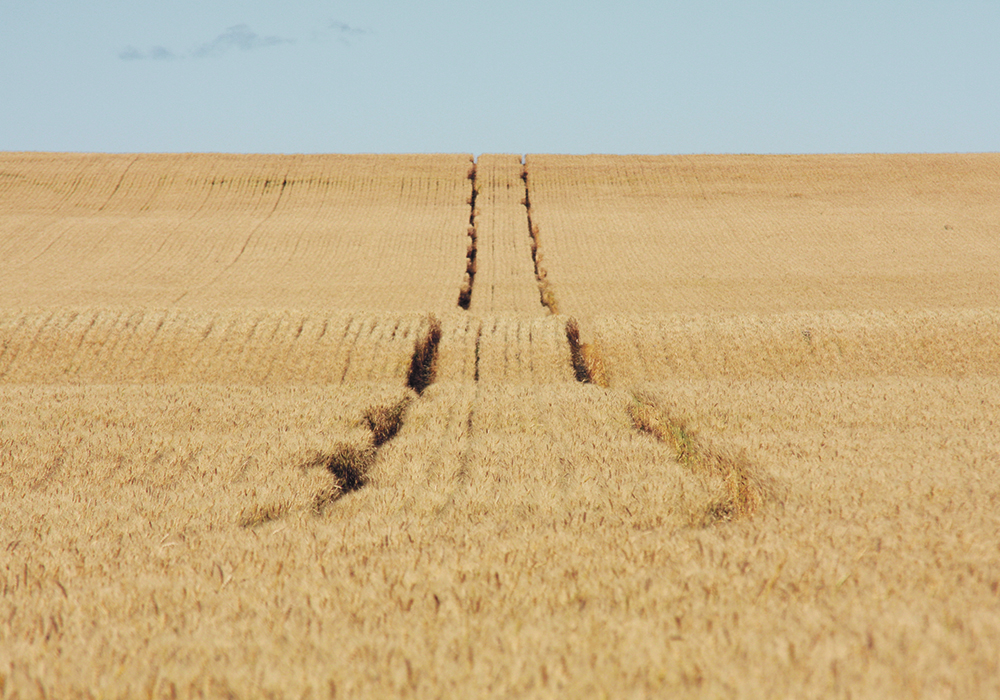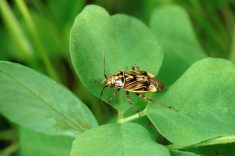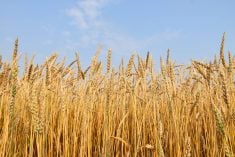Verify product acceptance with buyers because even registered products may not be acceptable in certain markets
Glacier FarmMedia – With harvest on the horizon or already underway, pre-harvest management strategies are useful to maximize yield.
To achieve crop dry-down, weed control and facilitate timely harvesting, product choice is important. Many generic products are available, but Manitoba Agriculture weed specialist Kim Brown recommends using brand-name products such as Roundup, Heat or Reglone, due to better product support and consistent registration standards.
Producers should always verify product acceptance with their buyer because even registered products may not be acceptable in certain markets.
Read Also

Fertilizer method’s link to emissions studied
A researcher says others studying greenhouse gas emissions aren’t considering how the loss of nitrogen into the atmosphere correlates with fertilizer application or if there is an impact to yield.
“Just because it’s registered doesn’t mean your buyer will accept it. So always, always check with your buyer,” Brown said in the Manitoba Agriculture Crop Talk online seminar held Aug. 14.
Glyphosate is primarily used for pre-harvest perennial weed control. Applied at the wrong time, it could affect germination and seed dry-down and result in excess residue levels.
“Basically, you have to put this on when grain moisture is less than 30 per cent, because anything more than 30 per cent, (and) you’re actually going to get some of that glyphosate pulled into the seed, and that is going to show up in … maximum residue limits,” Brown said.
For wheat, barley, oats and canaryseed, the ideal application stage is hard dough, where seeds are firm but not fully mature. For peas and mustard, most pods should be yellow to brown, while flax should have 75 to 80 per cent of the bolls turned brown.
Glyphosate application requires careful timing, especially in cooler weather when the days shorten and nights are colder. It may take up to two weeks for the product to work effectively. For optimal results, apply it with a water volume of 10 gallons per acre to ensure thorough coverage, especially in dense crops.
“We just want lots of coverage. We know Roundup is a systemic herbicide, but we still want lots of coverage for spraying big crops,” Brown said.
Barley, especially malt barley, may not be accepted if treated with glyphosate, so always check with grain buyers.
For oats, apply glyphosate when the kernel is firm and pressure from a thumbnail leaves a dent. As with barley, verify buyer acceptance before applying.
The ideal time for glyphosate application in peas is when 75 to 80 per cent of the pods are yellow to brown and seeds rattle in the pods. It should be applied to fababeans when the lower pods have turned dark brown or black and grain moisture is below 30 per cent.
In canola, apply when the bottom third of the seeds are brown or black and the top third are firm but not squishy. The optimal harvest period is seven to 14 days after application.
“Canola timing cannot be determined by pod colouring,” Brown said. “You have to open those pods and take a look at the seeds inside.”
When using glyphosate in canola production, clarify its intended purpose, she added.
“Roundup is for preharvest perennial weed control. It’s not desiccation. If you’re doing desiccation, you’re going to be waiting a long time.”
Misapplication could damage crop quality and affect harvest timing, which in turn might affect overall yield and profitability.
Heat is another product used to speed crop dry-down and control green weed material. It should be applied during the heat of the day with adequate water volume for optimal coverage. The pre-harvest interval for Heat is two to three days.
Reglone is a fast-acting desiccant ideal for drying immature green material in crops. It should be applied in the morning or evening to avoid overly rapid desiccation. The pre-harvest interval varies from four to 10 days, depending on the crop.
“Basically, what you sprayed is what you’re going to get. You apply in the morning or evening, not in the direct sunlight during the day,” Brown said.
She advised focusing on the least mature areas of the field to ensure uniform application and avoid locking in green seeds. Always follow label instructions and respect pre-harvest intervals to minimize residue levels and ensure the crop meets market standards.


















